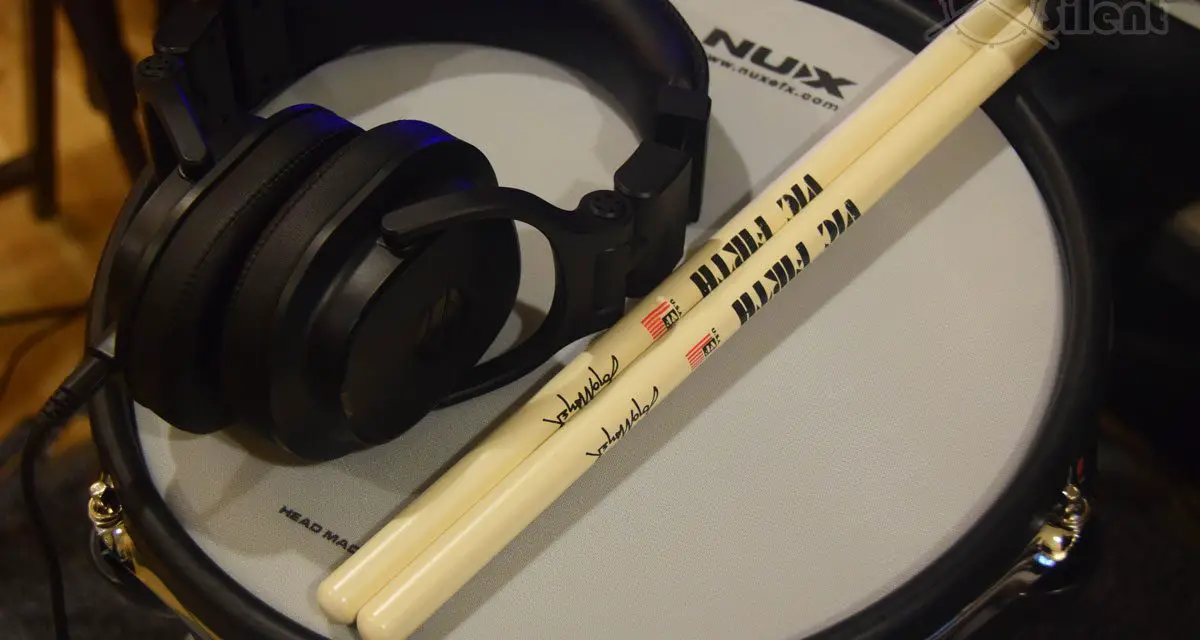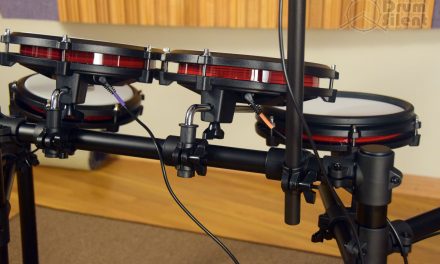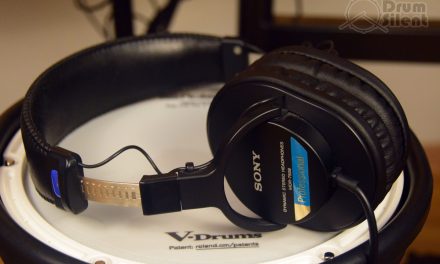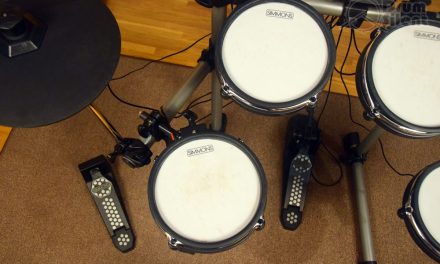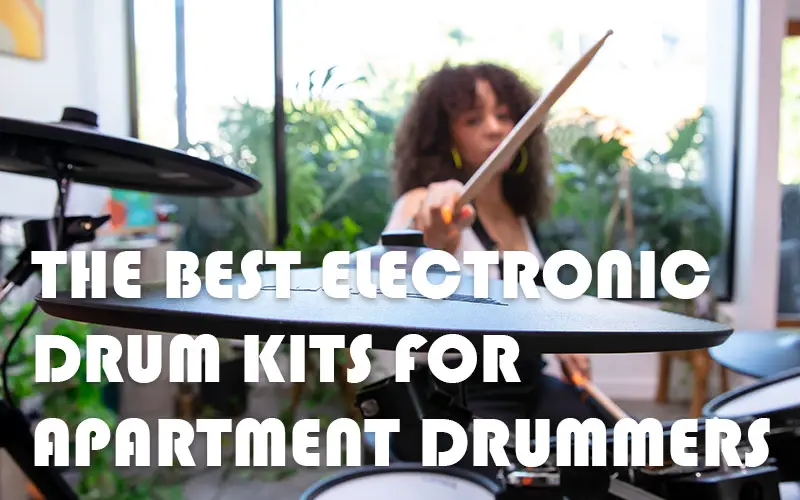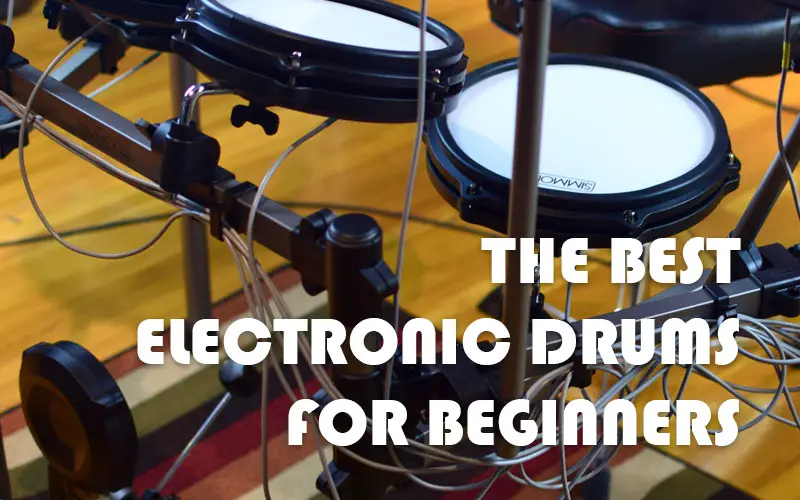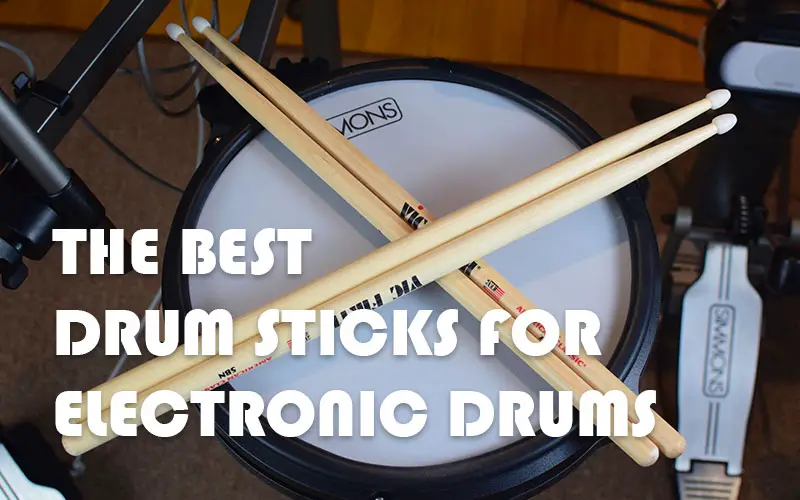Some drummers love electronic drums and some even prefer them over acoustic for various reasons. I recently looked at some of the reasons why drummers might hate electronic drums, and now I’m going to look at reasons why some drummers love electronic drums.
The Noise Factor
It’s no secret that one of the main reasons that some drummers really love electronic drums is because it allows them to play under circumstances where an acoustic drum kit is just too loud. Even if a drummer might not necessarily love their electronic drum kit, they love the fact that they can get more practice in through the use of an electronic drum kit. This is a common factor for apartment drummers, drummers with close living quarters or drummers with close neighbors.
Ability to Control The Volume
This kind of goes along with the noise factor. The ability to control the volume of a drum kit can be very useful in many situations, even outside of something like practicing at home in an apartment. Some drummers might love to have the ability to reduce the volume of their drum kit in a live setting without having to play less aggressively, and that’s where electronic drums can have an edge. It can also be easier for sound engineers to mix the drum sounds in certain settings and control the levels from the board more easily when using electronic drums.
Drum Kit Footprint
Some drummers might not have much space to set up or store an acoustic drum kit. For that reason some drummers might love the ability to set up a more compact electronic kit that takes up less space and is more easier to move out of the way when needed.
If I were to try to set up my acoustic drum kit in my apartment (ignoring the noise factor) it would take up twice the amount of space as my electronic kit – and that would be taking up something like half of the space in my living room. That’s why I love my capable but compact electronic drum kit – it just fits in my small living room and doesn’t feel unruly in terms of size.
My electronic drum kit rug is 4×3 feet and my Roland TD-17 kit doesn’t even fill up the entire area of the rug. As a comparison my acoustic drum kit rug is 4×6 feet and the acoustic kit with all the cymbal stands takes up the full rug plus a little more.
Recording Can Be Much Easier with Electronic Drums
Of course there’s arguments to be made about the sound quality of recording with electronic versus acoustic drums. But putting those arguments aside, the process of recording an electronic drum kit is much easier. Drummers who want to quickly be able to record either audio or MIDI drum tracks sometimes love the ease of use that an electronic drum kit can provide in that area.
Recording MIDI based drum tracks is a huge advantage for electronic drums if you want to go that route. Recording MIDI and then using drum VST’s gives you a lot of flexibility when it comes to fixing mistakes and changing drum sounds in post-production. Some electronic drum modules can also output multi-track audio over USB, so you essentially only need one cable to connect your drum kit to your computer and route the audio tracks to your DAW to record that way. You can even do all of this quietly in an apartment.
Recording an acoustic drum kit can be quite the process and requires more overhead. You’ll need a decent room in terms of acoustics, good sounding drums, mics, lots of cables, multi-track recording interfaces and lots of know-how when it comes to properly micing everything up and capturing a decent drum kit sound overall. While it can be fun to go this route, there’s just a lot more involved and some drummers might not want to deal with all of that.
Drum Sound Variety
Some drummers love the fact that electronic drums offer many different sounding drum kits and effects in a single drum module. If you like to have access to lots of different sounds while playing drums, electronic drums can have the advantage there. And if you have a good sounding drum module the drum and cymbal samples can sound very polished and almost studio-level right out of the box, or also even very natural like sitting in a studio drum room with a very well-tuned and matched acoustic drum kit.
In order to give yourself a wide variety of drum sounds to use with acoustic drums you need to have a nice collection of drums and cymbals and you also need to get used to tuning your drums or changing heads to achieve different tonal qualities. Building up a collection of drums and cymbals takes time, money and space to store it all. While that can be fun, it’s just not feasible for many drummers to go that route.
No Need for Tuning
Some drummers love the fact that they don’t need to tune electronic drums. Electronic drums also don’t fall out of tune or change tonal characteristics as the drum heads stretch or wear out. Once you have your sound programmed the way you want it to be, it stays that way until you intentionally change it again.
Electronic Drums Combine Well With Electronic Music
Drummers who are into electronic music production, hip-hop or other experimental types of music might love electronic drums for their ability to integrate well with electronic music production processes. This could include things like triggering sound loops and samples while playing drums at the same time. It could also include capturing drum performances or beats via MIDI to use as loops or as building blocks for songs and arrangements. There’s a lot of possibilities here.
Features for Practicing
Some drummers might love the fact that drum modules often have good features built in for practicing. The two most important features here are the metronome and the ability to input from an auxiliary source to play along with music, but there are often other coaching or practice features built in for beginner drummers as well. More and more modules these days are also adding Bluetooth features so you can play along with music from your phone without needing to use any cables.

